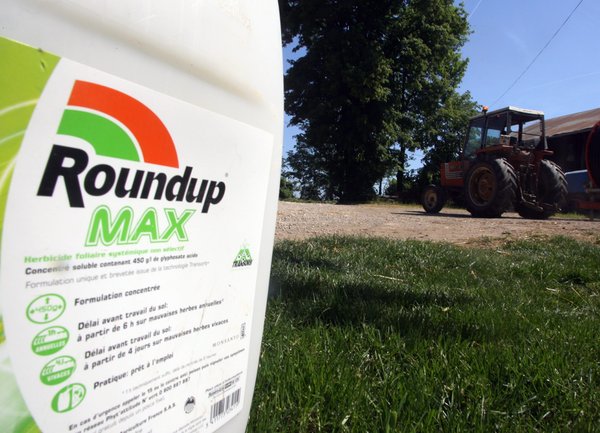Glyphosate of course is the main ingredient in Monsanto's famous Roundup herbicide product. The paper which was published on Feb 2, 2016, claims that as of this time, 18.9 billion pounds of glyphosate has been used across the world.
According to a press release by Environmental Working Group,
Dr. Charles Benbrook, the author of the paper, stated that, "The dramatic and rapid growth in overall use of glyphosate will likely contribute to a host of adverse environmental and public health consequences."In 2014, enough glyphosate was sprayed to leave more than three-quarters of a pound of the active ingredient on every harvested acre of cropland in the U.S., and remarkably, almost a half pound per acre on all cropland worldwide (0.53 kilogram/hectare).
As EWG points out, since genetically engineered Roundup ready crops were publicly introduced in 1996, glyphosate use has risen almost 15-fold.
EWG also highlights the heavy dousing of agricultural products with glyphosate over a concentrated amount of time:
Benbrook said:Remarkably, 74 percent of all glyphosate sprayed on crops since the mid-1970s was applied in just the last 10 years, as cultivation of genetically engineered corn and soybean crops exploded on both U.S. and global croplands.
Glyphosate was first sold commercially in 1974, but its use by farmers was limited at first because the active ingredient killed both weeds and crops. The subsequent development and approval of genetically engineered (GE), herbicide-tolerant (HT) crops dramatically changed how farmers could apply it. Starting in 1996, Monsanto and other seed companies began marketing GE-HT versions of three major crops — cotton, corn, and soybeans -making it possible for farmers to apply glyphosate for months after crops started growing.
The use and efficacy of HT technology, particularly in its first decade, led to its rapid and near-universal adoption in the U.S., Canada, Argentina, Brazil, and a half-dozen other countries. As a result, glyphosate use by U.S. farmers rose from 12.5 million pounds in 1995 to 250 million pounds in 2014, a 20-fold increase. Globally, total use rose from 112.6 million pounds in 1995 to 1.65 billion in 2014, a nearly 15-fold jump.
My hope is that this paper will stimulate more research on glyphosate use and human and environmental exposure patterns to increase the chance that scientists will quickly detect any problems that might be triggered, or made worse, by glyphosate exposure.
Comment: There is more than sufficient evidence that glyphosate is toxic to the environment and to humans, and there would be little debate on its continued use if Monsanto did not have such an iron grip on the EPA.
- Roundup linked to global boom in Celiac Disease and Gluten Intolerance
- Long term exposure to small amounts of Roundup herbicide changes gene expression leading to kidney, liver damage
- Gut-Wrenching: New studies reveal the insidious effects of Glyphosate
- Roundup Birth Defects: Regulators Knew World's Best-Selling Herbicide Causes Problems, New Report Finds
- Roundup Herbicide Linked To Parkinson's-Related Brain Damage
- WHO states Monsanto's Roundup 'probably' causes cancer
- The whole toxic enchilada: Monsanto's Roundup
Benbrook is no stranger to the issue of genetically engineered crops and pesticide use. His paper "Impacts of genetically engineered crops and pesticide use in the U.S. - the first 16 years," published four years ago, is the most heavily accessed paper in the history of Environmental Sciences Europe.
Clearly Benbrook and his work should be taken seriously and the United States as well as the rest of the world should pay careful attention to what his research has revealed.




Comment: The massive use of glyphosate has made it difficult, if not impossible to avoid exposure: